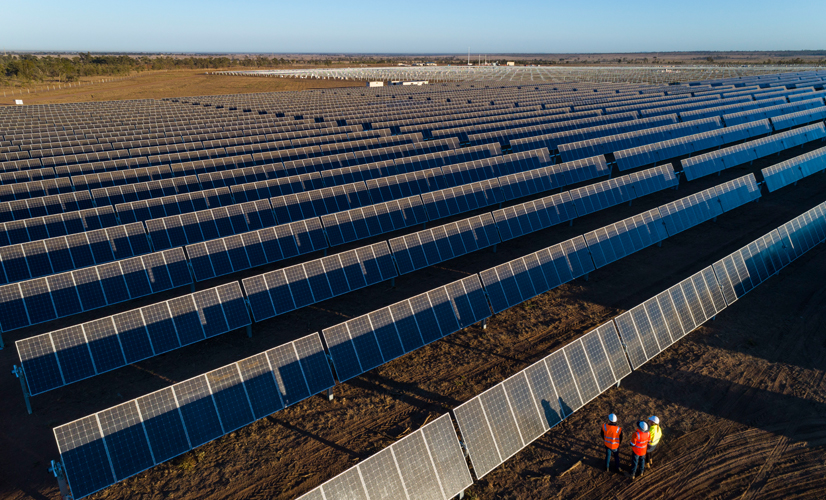Adani’s first renewables project in Australia, a 65 MW solar farm near Moranbah is now officially open and at full operation, powering more than 23,000 regional Queensland homes and businesses. The project launch comes as the Indian mining giant’s renewables arm decides to put on hold its plans to invest $1 billion or more in renewable energy projects in Australia.
In an example of how grid connection issues are hindering new generation capacity from joining the electricity supply system, the Rugby Run Solar Farm was switch on in June following seven months of grid connection delays. The project features 247,000 solar panels, which makes it the eighth largest solar farm in Queensland and a big contributor to the state government’s goal of 50% renewable energy by 2030.
The $100 million Rugby Run project was self-financed by Adani. The developer managed construction contractors directly, and not via the EPC contract model. More than 175 people were employed during peak construction periods. Adani will be selling 80% of the project’s output under a power purchase agreement to an Australian electricity retailer, while the remaining 20% will be sold on the spot market.
“People are often surprised when we say we’re in the renewables business, but the reality is that we recognize the world needs a reliable and affordable energy mix of both coal and renewables in order to meet current and future global energy demand,” Adani CEO Lucas Dow said at the project launch on Thursday.
The project is part of Adani’s plan to develop 1.5 GW of PV capacity in Australia. Aside from the Rugby Run project, the developer received planning permission in 2017 for a 140 MW solar farm to be located just outside Whyalla, South Australia. Adani is currently negotiating a PPA which is expected to inform a commercial decision on the project in 2019.
But, it seems that Adani’s ambitious renewables plans have been shelved following the delays on its flagship solar project in Queensland. As reported by the AFR, Adani will be more “opportunistic” around projects amid uncertainty around the integration of wind and solar into the grid, long-term policy and customer demand.
Adani is also fully aware of other headwinds in the market reflected in worsening Marginal Loss Factors (MLFs). After MLFs have resulted in downgrading the output of a number of generators, the developer has officially submitted two rule change requests about how MLFs are calculated and how intra-regional settlement residues are distributed.
The Australian Energy Market Commission (AEMC) is consulting on these rule change requests as it seeks to enable broader consideration of the transmission loss factor framework aimed at sending the most appropriate signals to investors in the face of power system restructuring.
This content is protected by copyright and may not be reused. If you want to cooperate with us and would like to reuse some of our content, please contact: editors@pv-magazine.com.









By submitting this form you agree to pv magazine using your data for the purposes of publishing your comment.
Your personal data will only be disclosed or otherwise transmitted to third parties for the purposes of spam filtering or if this is necessary for technical maintenance of the website. Any other transfer to third parties will not take place unless this is justified on the basis of applicable data protection regulations or if pv magazine is legally obliged to do so.
You may revoke this consent at any time with effect for the future, in which case your personal data will be deleted immediately. Otherwise, your data will be deleted if pv magazine has processed your request or the purpose of data storage is fulfilled.
Further information on data privacy can be found in our Data Protection Policy.